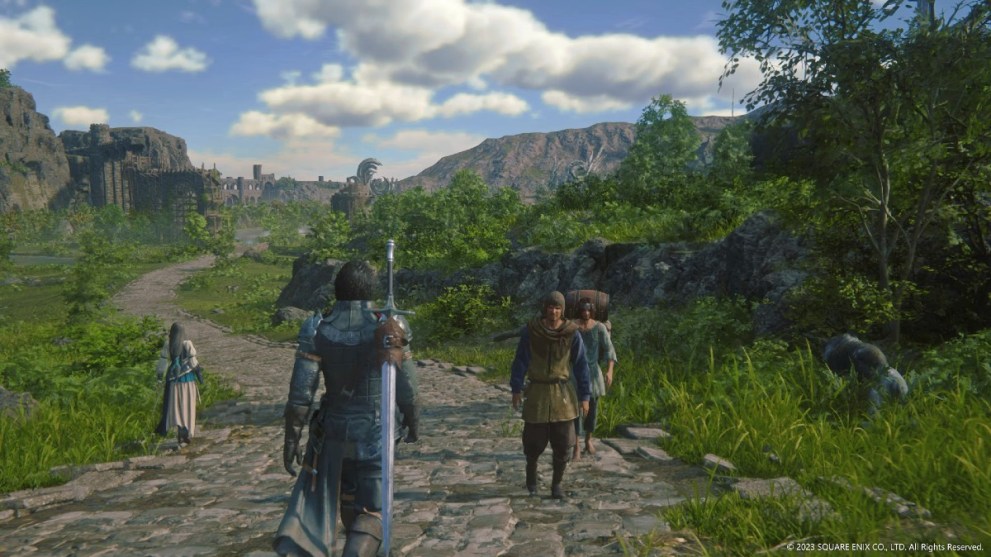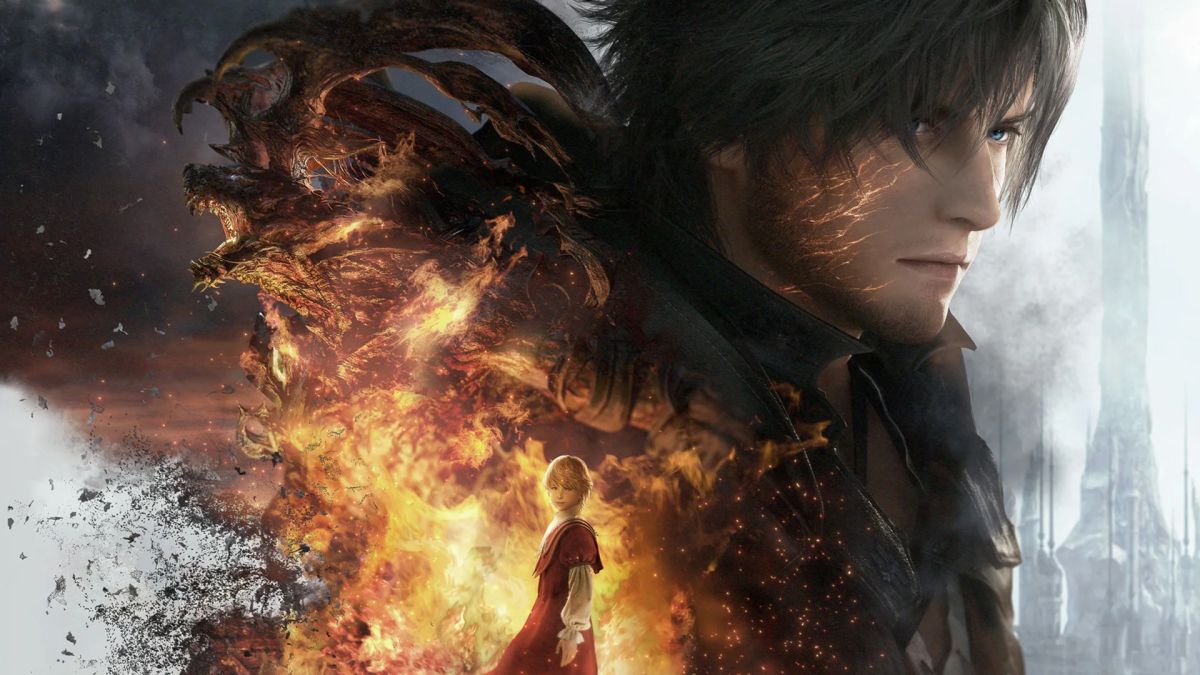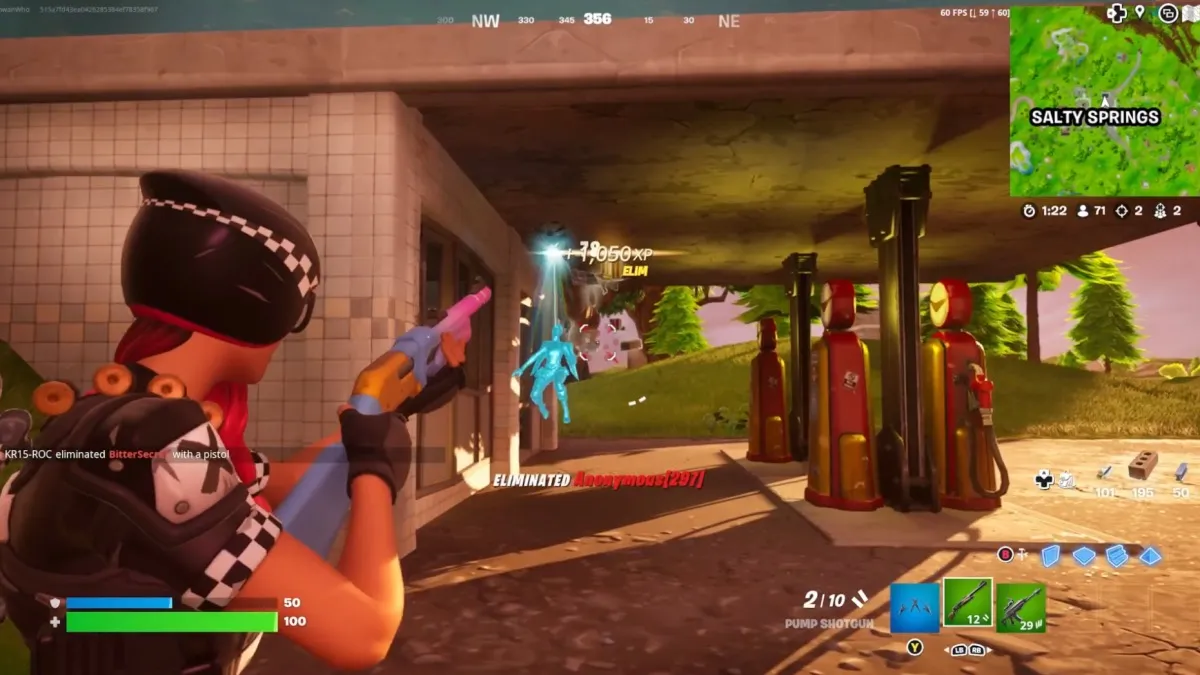Final Fantasy XVI on PS5
After every Eikon battle in Final Fantasy XVI, I kept asking myself “how can the next one be any better?” Only to be proven wrong each and every time.
The scale and scope of Final Fantasy XVI are absolutely staggering on every level, from the complex narrative that feels like a multi-season TV show, to the expansive action combat that grows and changes meaningfully across dozens of hours. All of this is highlighted with what might be the best boss battles I’ve ever seen in a video game. There are some minor quibbles to be had, but Final Fantasy XVI is an instant classic in a series already filled with many.
Final Fantasy XVI takes place in a brand new setting called Valisthea, a dark fantasy realm split into multiple warring kingdoms that fight over control of the Mothercrystals, massive objects that allow the people of the world to use magic and live in comfort. Across Valisthea there are a select handful of people that have inherited the power of Eikons, massive god-like creatures that take the form of summons from past games, like Titan, Shiva, and Bahamut. You control Clive Rosfield, the second son of the Duke of Rosaria, a country steeped in tradition that worships the Eikon of Fire, Phoenix. After a tragic turn of events Clive awakens as a second Eikon of Fire, something previously thought impossible.

Final Fantasy XVI weaves a complex tale steeped in politics and subterfuge in the early game. From the jump it’s abundantly clear that the development team has taken liberal inspiration from Game of Thrones, but that style really works here.
There’s certainly a more “adult” tone that seeps into Final Fantasy XVI, but that benefits this game largely because of some stellar performances from the voice cast that add a lot of maturity. That being said, that more adult tone doesn’t mean this game doesn’t have the same kind of whimsy that you might expect from a Final Fantasy. There are plenty of heartfelt moments and a surprising amount of comedy. On that latter aspect, a huge highlight is Clive’s uncle, Byron Rosfield, who feels like the larger-than-life galumph of an old man, right in line with Galuf from FFV or Cid from FFVII.
Even though Clive is the only playable character there are a wealth of people he forges relationships with throughout the story, from close confidants like Jill, Shiva’s dominants, to the fantastically-written Cid. You may not be building a party, per se, but there’s meaningful development for nearly every major character, both in terms of their own stories and how they relate to Clive. So while some may be disappointed by the lack of “customization” for a party, the narrative crux of working together is still there in full force.
An utterly soul-crushing opening paves the way for an emotional story that puts the focus squarely on a dynamic cast of characters, and it becomes clear early on that narrative is a huge focus of Final Fantasy XVI. That dark fantasy style does a great job of investing you in the world, before the latter half of the game takes some wild fantastical jumps that put the story squarely in the fantasy and sci-fi wheelhouse the series is built on.
Clive himself is a fascinating protagonist that’s initially wracked with self-doubt and a singular focus on revenge, but as time goes on both of those points soften and he has to learn how to lean on others. There are plenty of weighty themes that the game isn’t afraid to dive headfirst into, including slavery and subjugation, breaking free of a cycle of oppression, and striving to create a better world for everyone. Its themes are surprisingly topical at this moment in time, and for the most part, they’re tackled well.
A lot of the game’s marketing has shown these big bombastic battles and set pieces, but FFXVI has a surprising amount of slow character development and world-building interspersed between all that. A roller coaster ride is actually a good comparison as you have bound between these ultra-high intensity story moments and slower methodical questing.

Interestingly, Final Fantasy XIV players will absolutely see a lot of parallels in the storytelling here, and even in a few of the twists. It’s clear that the development team has taken the lessons they’ve learned over the last decade on the MMO to heart. Perhaps what most surprised me, however, is how narratively complex Final Fantasy XVI‘s sidequests feel.
There’s a real weight behind the storytelling, and Final Fantasy XVI really wants to show you how its world and characters change over time. Some of the game’s most tear-jerking moments can actually be found in optional sidequests, but there is a catch. While these quests are narratively complex, they’re mechanically simple, generally amounting to nothing more than killing a few enemies or collecting items. The rewards are often lackluster as well, meaning the narrative payoff is the real reason you might pursue side activities.
Of course, apart from the narrative choices the other big change with Final Fantasy XVI is its jump to full-on action RPG. On its face the combat system is deceptively simple, giving Clive basic combo, dodge ability, ranged magic, etc. The opening hours ease you into the experience by incrementally introducing these systems, but where things really get wild is when you start to unlock the different Eikon sets, as each one gives Clive a handful of new abilities.

Final Fantasy XVI does a phenomenal job with its progression, incrementally introducing new Eikon sets, each of which feels entirely distinct. You can equip up to three Eikon sets at any time letting you access all three’s unique perks. However, Eikon abilities can be mixed and matched however you please once you spend enough SP, letting you create a wealth of varied playstyles.
For example, Titan focuses on causing massive damage to single enemies and using counters, while Odin is great at dashing between crowds of enemies and unleashing AoE attacks.
The sheer variety of this system is staggering, especially as you continue to unlock new options after dozens of hours. The one downside here is that outside of the Eikon system, a lot of the “RPG” elements feel paper thin. There’s a leveling and crafting system but both require so little input from the player they can easily fade into the background. For most of the game, there’s typically one option for a better weapon and armor, although accessories do provide much more customization for what kind of build you want.

While there are party members that join Clive across his journey they’re completely hands-off, except for your faithful hound Torgal. This massive wolf is the one character that’s constantly with you, and he essentially works as a combat assist.
By pressing left on the d-pad you can switch from your items to commands for Torgal, and using these commands in tandem with your own attacks can create new combos. If you’d rather Torgal handles things himself, though, there’s an accessory that makes that happen, along with accessories that can help alter combat difficulty by letting you do automatic combos, make dodges easier, etc.
While there’s a lot of variety packed into the different enemy and boss types, the absolute pinnacle of Final Fantasy XVI is the jaw-dropping Eikon battles, which serve as climaxes for both the narrative and gameplay.
Each of these Eikon battles feels wildly different, and the absolute scale of the action happening on-screen feels like one of the first true moments we’ve seen what the PS5 is capable of.

While the Eikon battles typically involve a healthy dose of cutscenes, each one also has its own distinct gameplay style. One mixes things up with rail-shooter elements, another has you racing up the side of a massive opponent while dodging obstacles, while another feels like a tough-as-nails sword duel between you and your opponent.
Over and over I found myself in awe of the ambition of these Eikon battles; they each feel so mechanically rich and unique, while also serving as turning points for the story. I honestly can’t think of another game out there that pulls boss battles off this well this consistently.
A big part of that, of course, is simply how gorgeous Final Fantasy XVI‘s presentation is on every level. Cutscenes look absolutely fantastic with realistic character animations and dazzling particle effects, especially in those aforementioned Eikon battles. At the same time, the world of Valisthea feels environmentally diverse with sweeping European-esque vistas, arid deserts, crumbling cities, and more. I played Final Fantasy XVI entirely in Graphics Mode, which held at 30fps consistently, and I can’t think of a single time I saw any kind of frame-rate drop, even in the overwhelming action sections.

A big part of the presentation that deserves special mention is the soundtrack; an eclectic mix of epic opera, sweeping orchestral, heavy metal, and rock. Masayoshi Soken’s work has been defining for Final Fantasy XIV, but he’s absolutely outdone himself with this soundtrack, which adds so much weight and gravitas to both the narrative and gameplay.
There are flaws I can point to in Final Fantasy XVI, like occasionally sluggish pacing and thin RPG elements, but those flaws are so completely overshadowed by everything the game gets right.
Final Fantasy XVI wants to engross you in its world and lore, and takes liberal steps to that, even with the smallest of side characters. You can dive as deep into the game’s lore as you want, but crucially you don’t have to, it never forces you to. The combat system grows by leaps and bounds, resulting in one of the most exhilarating action experiences out there, especially in the jaw-dropping boss and Eikon battles.
After 80 hours what I find most fascinating about Final Fantasy XVI is its complete commitment to redefine what it means to be a Final Fantasy game, while also still staying true to the roots and themes of the series. This is a prime example of how Final Fantasy doesn’t have to be bound by one idea or system, and I sincerely hope it serves as inspiration for future developers to take the series in their own, completely new, direction.
- Complex narrative that with sidequests that feel meaningful.
- Extremely customizable combat system that grows over time.
- Incredible soundtrack that jumps between styles and genres.
- Stellar presentation and a vibrant world that feels rich visually.
- Massive Eikon battles that each feel distinct and memorable.
- "RPG" elements feel a bit thin.
- Sidequests are narratively rich but oftentimes simple on the gameplay front.














Updated: Jun 20, 2023 11:19 pm